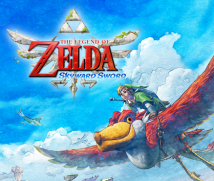23. The Vocabulary of a Feeling
While having this conversation, I feel very strongly that what comes before everything else is realising, “This isn’t any good.” If you aren’t thinking, “This isn’t interesting anymore,” you’ll never have any new ideas.
That’s true.
Right.
If you give something the green light because it works, appearance-wise, it’s never going to become something interesting. So as long as you can realise when something isn’t any good, or that it’s going to end up being boring, it generally means that everything will turn out all right.
Yeah. When I was working on Super Mario 64, I realised halfway through that it was getting boring.
Oh, nice. (laughs)
That’s an exciting prelude .
Is it? (laughs)
Well, what you’re saying is actually terrifying. In the middle of making Super Mario 64 - that Super Mario 64! - Miyamoto Shigeru realised, “This is getting boring.”
Not only that, but you realised it when you were in the midst of desperately working on it.
And?
What did you realise?
All of a sudden it hit me. I don’t remember if it was when I watched someone playing it, but I thought, “Wait, a minute...” So I went around and asked everyone, “This game was really fun in the beginning, but now it doesn’t feel fun anymore, does it?” And just as I’d expected, they all said, “We agree.”
Yeah. And why was that?
Well, it was something really simple about Mario’s movement. In the beginning, we had Mario turning really slowly, so that it was really overemphasised. But at some point he’d started turning really quickly. He kind of zipped around.
Oh...
So then we changed it so that he went back to turning really slowly. And well, I’m not sure if that was the right change to make, but it was really important to me. Because Super Mario 64 was a project that started from that turning movement.
Oh, I get it. And as you got involved in making it, you forgot that.
That’s right. That’s my special talent. Realising that he’s not moving the same way he did in the beginning.
“My special talent.” (laughs)
(laughs)
We all need to brag about our good points. (laughs)
(laughs)
If there’s someone who can catch on to that sort of thing, I can feel comfortable with leaving things to the person to some extent.
Oh, that’s true. How can I put it? They can remember how it felt. When something changes, for better or worse, they don’t need to use words or theory, they remember the “feeling.”
You can remember what was so good in the beginning - that “feeling” that was your original motivation. And you can remember the “feeling” of what and how things have changed.
In other words, there’s a vocabulary for that “feeling.” Take the perfume industry. You have professional perfumer, and what they smell determines how perfumes all over the world are made. If you or I can smell 10 different scents, they can divide those into another 10 classes of scents, and then classify those even further. They’re able to distinguish tens of thousands of scents.
Right.
And for you, Miyamoto-san, I think that you can do the same with the way that it feels when a character’s movement is satisfying. Whether it’s turning around really slowly, or turning really quickly, or jumping, you’re able to differentiate the way that each of those feels. It’s like that country - I forget which one it was - where they have 100 words for rain.
Oh.
Oh. Right, right.
There are a lot of Japanese words that are really hard to describe. Like “shimi-jimi-to-suru (feelingly)” or “mizu-mizu-shii (lush).”
There are all kinds of feelings we can’t express through only joy, anger, sorrow and pleasure. And that’s how detailed your ability to differentiate what you feel is with a game, Miyamoto-san.
Right! That’s why he can taste each separate feeling.
